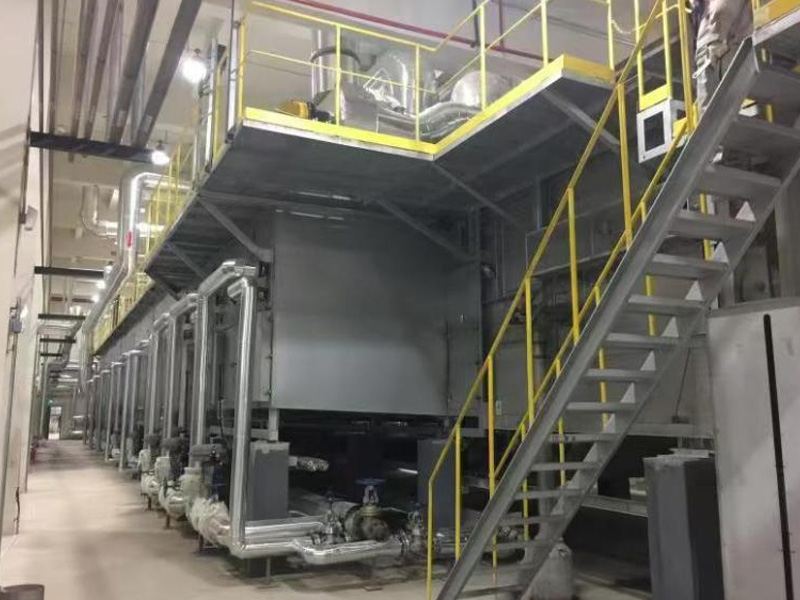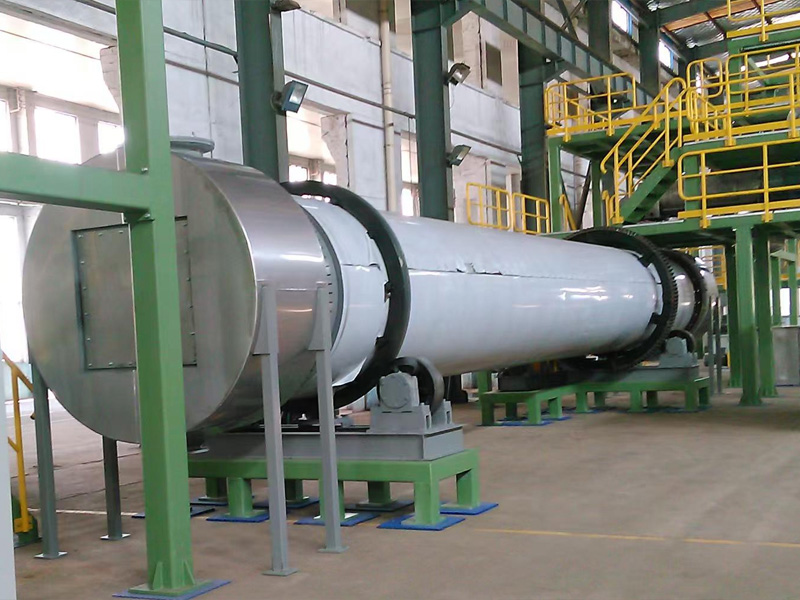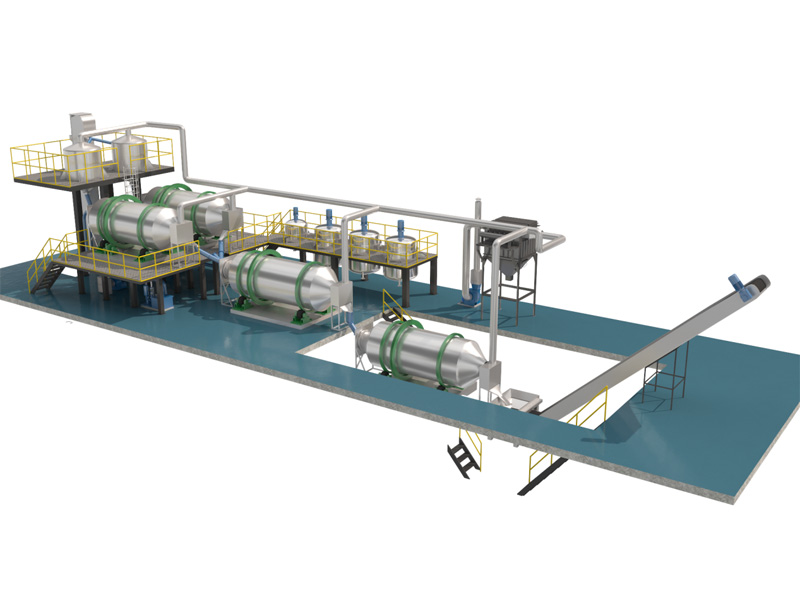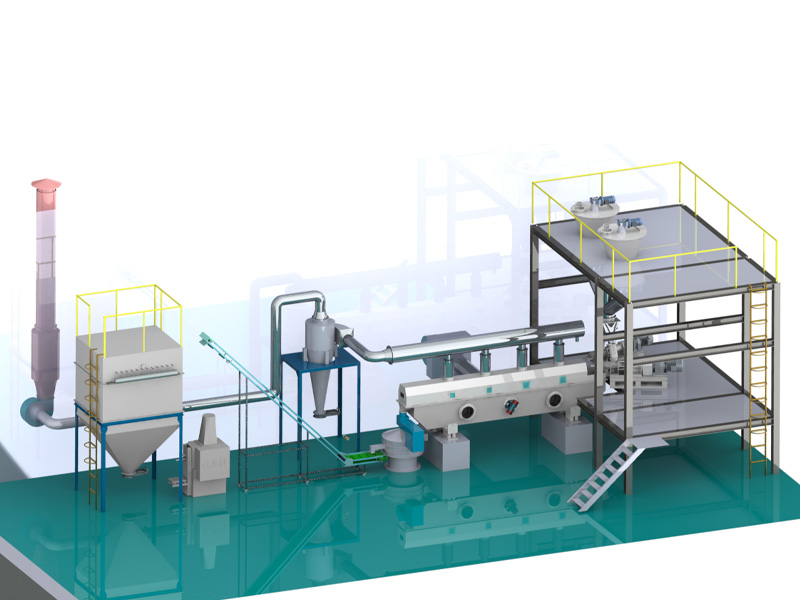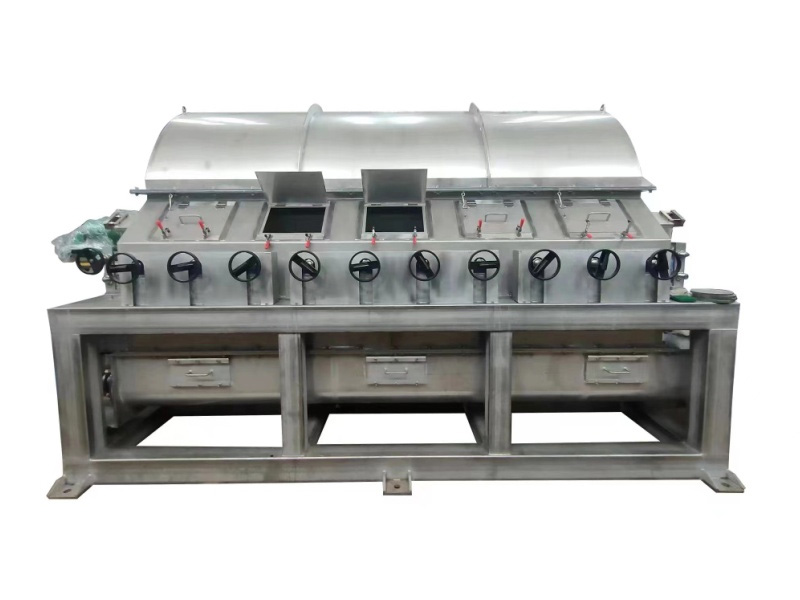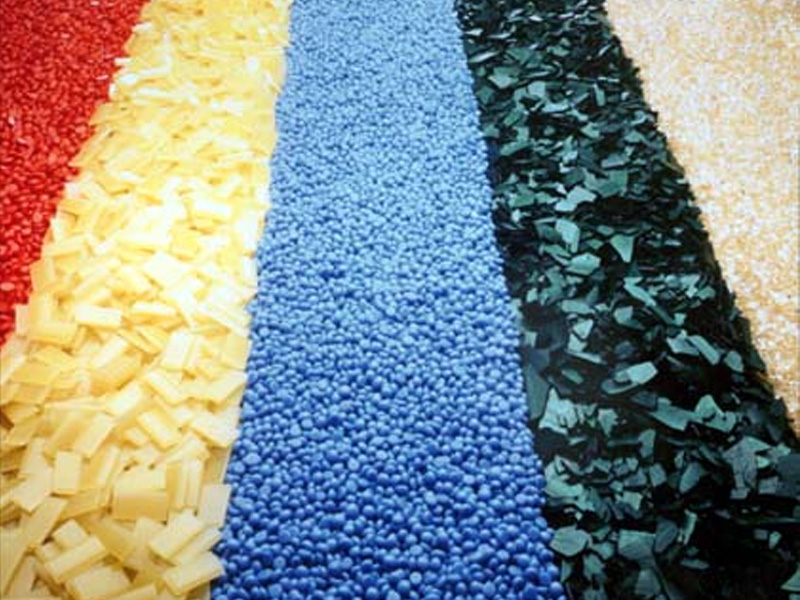Complete Equipment Set and Process for Rotary Condensation Steel Belt (Granulation and Flaking)
1.Process Flow:
The hot molten material coming from the reactor (upstream process) is evenly distributed onto the steel belt, which is moving at a uniform speed below, through different types of distributors. Below the steel belt, there is a continuous spraying and cooling device that forces the material on the belt to cool, condense, and solidify quickly during the movement process, thereby achieving granulation and molding.
According to the physical properties and process requirements, different types of distributors can be chosen, such as external rotary, internal rotary, and gate-type. Depending on the physical properties and usage requirements, various distribution methods can be selected, such as intermittent dripping, continuous striping, and full-width overflow, to produce hemispherical, strip, and flake products, respectively.

2.Application Range:
This equipment is suitable for various products with melting points (or softening points) within 250°C that require granulation (or strip and flake formation), as well as products with supercooling crystallization characteristics. It is widely applicable in industries such as additives, intermediates, pharmaceuticals, pesticides, food, environmental protection, petrochemicals, fine chemicals, and basic organic chemicals.
Typical materials: sulfur, paraffin, resins, asphalt, maleic anhydride, phthalic anhydride, stearic acid products, hot melt adhesives, m-phenylenediamine, urea, rubber and plastic additives, etc. It can also be used for the cooling of materials such as epoxy film plastics and emulsified explosives.
3.Granule Shapes:

4.Application Scenarios:

5.Clients Served:



